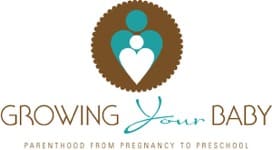Having a baby later in life has become more common than ever. With better access to education, careers, and reproductive technology, more people are waiting until their late 30s and 40s to start families. But a recent study out of Sweden is adding new data to an ongoing conversation: what does giving birth at 40 or older mean for your baby?
This nationwide study followed more than 300,000 births between 2010 and 2022, all to women aged 35 and older. Researchers wanted to understand if risks changed as maternal age increased—and the answer was yes, they did. While serious complications were still relatively rare, the odds of problems like preterm birth, low Apgar scores, and hypoglycemia grew with maternal age.
There have been many past studies that have shown that being 35 or older comes with increased pregnancy risks. But lumping all women 35+ into one group may miss some important differences. That’s why this study separated mothers into three groups:
- 35–39 years (reference group)
- 40–44 years (advanced maternal age)
- 45 years and older (very advanced maternal age)
By doing so, the researchers could see how the risks changed across those age brackets—and help families get a clearer picture of what to expect.
Key Takeaways from the Study
Let’s start with the big picture: most babies born to women 40 and older were healthy. However, compared to the 35–39 age group, researchers found that:
- The risk of stillbirth was higher in both older age groups.
- Babies were more likely to be born preterm (before 37 weeks).
- The odds of being small for gestational age (SGA) increased.
- More babies had low Apgar scores at 5 minutes.
- Hypoglycemia (low blood sugar) was more common.
And for those 45 and older, the risks were even higher.
Here’s what the research uncovered:
| Outcome | 35–39 Years | 40–44 Years | 45+ Years |
|---|---|---|---|
| Stillbirth | 0.42% | 0.55% | 0.83% |
| Preterm birth (<37 weeks) | 4.8% | 6.1% | 8.4% |
| Small for gestational age | 2.3% | 2.9% | 3.6% |
| Apgar score <7 at 5 min | 1.7% | 2.2% | 2.4% |
| Hypoglycemia | 1.9% | 2.7% | 4.0% |
Even though these numbers seem small in percentage terms, when scaled up to national levels, they represent hundreds or thousands of babies affected each year.
Why Do These Risks Increase?
The study doesn’t pinpoint one clear cause, but it highlights several likely contributors:
- Placental insufficiency: The placenta might not work as efficiently in older mothers.
- Increased medical conditions: Hypertension, diabetes, and preeclampsia were all more common in older age groups.
- Assisted reproductive technology (ART): Use of fertility treatments increases with age and may carry added risks.
- Cesarean delivery rates: More common in older mothers, and while sometimes necessary, C-sections can be associated with different types of neonatal complications.
Also worth noting: 18% of mothers aged 45+ in the study used ART, compared to 6.7% in the 35–39 group.
Apgar Scores
The Apgar score is a quick test done at 1 and 5 minutes after birth, assessing a baby’s heart rate, breathing, muscle tone, reflex response, and skin color. A score below 7 may indicate that the baby needs medical attention.
In this study, babies born to mothers aged 40–44 had a 23% higher adjusted risk of a low Apgar score compared to the reference group. That risk was slightly lower (and statistically borderline) in the 45+ group, likely due to differences in delivery method and other health factors.
Even though Apgar scores can’t predict long-term health on their own, low scores have been linked to an increased risk of cerebral palsy and other developmental challenges.
Preterm Birth and Low Birth Weight Risks
Preterm births and babies born small for their gestational age were two of the biggest risk factors tied to advanced maternal age in the study.
- The risk of preterm birth was 26% higher in the 40–44 group and 68% higher in the 45+ group compared to the reference group.
- The risk of having a SGA baby was 26% higher in the 40–44 group and 46% higher in the 45+ group.
Preterm birth and SGA babies often require extra care after delivery and can face long-term health challenges, from respiratory problems to developmental delays.
The Good News?
Even with the increased risks, most babies born to mothers 40+ were healthy. Sweden also has an excellent maternal and neonatal healthcare system, which likely contributed to the relatively low rates of severe outcomes across all groups.
This study gives us clearer data—not alarm bells. It helps doctors and families better prepare for pregnancy at older ages by understanding which risks may be elevated and how to plan ahead.
What This Means for Families Considering Pregnancy Later in Life
If you’re planning to start or grow your family at 40 or older, here are a few takeaways:
- Know the risks—but keep perspective. The vast majority of older moms have healthy pregnancies and babies, especially with good prenatal care.
- Advocate for early and consistent prenatal care. Regular monitoring can catch problems early.
- Discuss screening and birth plans. Your care team can help plan for delivery methods and monitor baby’s growth and development.
- Factor in fertility support. If you’re pursuing ART, talk with your provider about potential risks and outcomes.
- Stay informed and supported. Pregnancy at any age benefits from strong support systems, community, and up-to-date information.
Limitations of the Study
While the study was comprehensive, it did have a few caveats:
- It didn’t include women under 35, so we don’t know how these older groups compare to the general population of all pregnant women.
- Some data—like the type of ART used or certain medical conditions—weren’t consistently available.
- As a register-based study, it can’t prove cause and effect, only associations.
That said, the scale and depth of the data make it a strong addition to what we know about maternal age and neonatal outcomes.
It’s no secret that the average age of first-time moms is going up. Whether by choice, circumstance, or science, more families are welcoming babies later in life. This new Swedish study gives us clearer insight into what that can mean—not to scare anyone, but to better prepare and support them.
If you’re considering having a baby after 40, the message is this: Be aware, not afraid. Talk to your doctor, get regular care, and stay informed. Age may be a number, but when it comes to pregnancy, it’s one that’s worth understanding.
More Pregnancy News:








